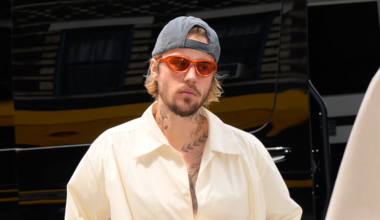Mel Gibson’s Unexpected Influence on Saving Private Ryan
Before controversy led to his Hollywood downfall, Mel Gibson was one of the most bankable and highest-paid stars in the industry. His career was built on intense performances, many of which unfolded on the battlefield. Whether it was the World War II drama Attack Force Z, the emotional depth of Peter Weir’s Gallipoli, or the raw intensity of We Were Soldiers, Gibson had a knack for bringing war stories to life. Of course, his most famous foray into combat remains Braveheart, which earned him Academy Awards for Best Picture and Best Director—a film drenched in blood-soaked heroism and unforgettable battle sequences.
Even after his fall from Hollywood’s good graces, Gibson managed to claw his way back into the industry with Hacksaw Ridge, a brutally realistic depiction of war that won two Academy Awards and received six nominations. But long before Hacksaw Ridge, Gibson almost had a direct connection to another war epic—Steven Spielberg’s Saving Private Ryan.
Gibson Was Almost Captain John Miller
During the casting process for Saving Private Ryan, Gibson was considered for the lead role of Captain John Miller, a part that ultimately went to Tom Hanks. Given Hanks’ emotionally layered and Oscar-nominated performance, it’s hard to argue against Spielberg’s decision. However, even though he didn’t land the role, Gibson still played an unexpected part in shaping one of the film’s most unforgettable moments.
The D-Day Landing: Gibson’s Surprising Influence
The opening sequence of Saving Private Ryan is one of the most hauntingly realistic battle scenes ever put to film—a gut-wrenching, visceral depiction of the D-Day landings at Omaha Beach. However, the scene almost never looked the way it did, if not for a key recommendation from Gibson himself.
Spielberg needed a location that could double for Omaha Beach, but using the actual battlefield was both logistically impossible and potentially disrespectful to the thousands who had died there. The production required a vast, open shoreline, thousands of extras, and a local government willing to host a massive Hollywood war epic.
This is where Gibson stepped in.
The Braveheart Connection
Gibson had already shot Braveheart in Ireland, where he had worked closely with the Irish military, who not only provided locations but also 1,600 reserve soldiers to serve as extras. Impressed by their willingness and professionalism, Gibson suggested to Spielberg that Ireland would be the perfect place to film the D-Day landings.
Taking Gibson’s advice, Spielberg chose Ballinesker Beach in Ireland as the stand-in for Omaha Beach. On June 27, 1997, he called “action” on what would become one of the greatest war films of all time—one that would earn him his second Oscar for Best Director.
A Lasting Legacy
While Gibson never set foot on the Saving Private Ryan set as an actor, his behind-the-scenes influence played a crucial role in shaping its most iconic scene. Without his recommendation, the film’s breathtaking opening might have looked very different.
It’s fascinating how one filmmaker’s past experience can shape another’s masterpiece. In the end, Spielberg brought his vision to life, Hanks delivered an unforgettable performance, and Saving Private Ryan went on to become one of the most celebrated war films in history. And yet, in an unexpected twist, Mel Gibson had a hand in making it all happen.






